This post may contain affiliate links. If you use these links to buy something we may earn a commission. Thanks.
It took a while to really understand what it meant for a mushroom to be a turkey tail (Trametes versicolor).
Through trial and error, picture-taking, and reference-checking I finally learned how to identify turkey tails on my own and you will too!
At the start, these two questions ran through my head every time I foraged: Is that turkey tail? What about this!?
At one point, I was so confused after reading identification guides that I wondered if other mysterious mushrooms existed that looked too much like turkey tail to tell apart—since there are so many types.
So first, let’s be clear.
Turkey tail looks like turkey tail—not some unlisted look-a-like that the previous blog post or book ‘didn’t know’ to include.
Related: How to Process and Consume Turkey Tail Mushrooms
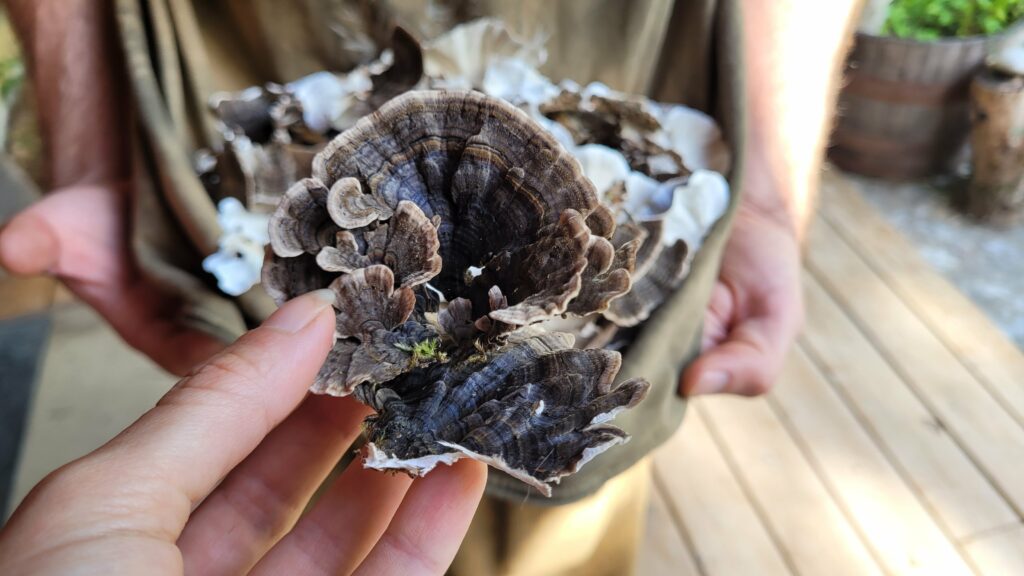
Disclaimer: This is not meant to be a single source for identifying any type of mushroom. You’re responsible for relying on your own research and judgment to correctly identify any mushroom. This is a guide that shares my experience and is not a guarantee that you have the right or wrong mushroom. I am not a mushroom expert.
Before you dive in, I just want to say that this 2 step process could seem quite obvious, but have you done both items thoroughly?
One of two steps is often overlooked and both are needed to establish a necessary foundation. Before I dove deep into these 2 essential steps, I felt unsure the whole way. You just can’t do it with one and not the other.
To eliminate the uncertainty and illuminate your confidence; here are the 2 essential steps to identify turkey tail mushrooms:
1. Understand key distinctions of turkey tail
Understanding the combination of distinct features of the turkey tail mushroom is the first step before you can compare and identify what doesn’t match.
The significance of this step is that it isn’t possible for anyone to provide a “complete” list of look-alikes—Everyone has their own perspective—what I think is a look-alike may obviously not be a look-alike to you.
Turkey tail does come in a variety of colors, but aside from color variances, they all share a specific combination of features.
So no matter what turkey tail you find, it should have all of these 6 characteristics:
- Small pores on the bottom
- A fine-haired velvety top
- Has a fan shape, like a turkey’s tail
- Concentric bands with at least 3 distinct different shades/colors
- Grows in a rosette or shelving arrangement
- Flexible when fresh
Small pores on the bottom
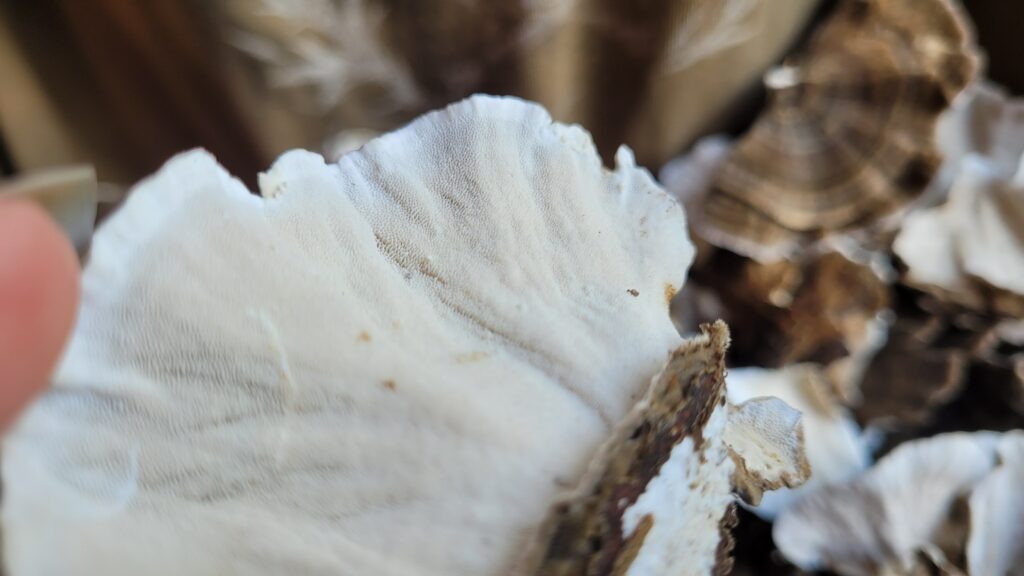
The bottom of a turkey tail mushroom will be white to off-white in color based on its age and have very small pores.
The pores are generally rounded in shape and are very small.
A fine-haired velvety top
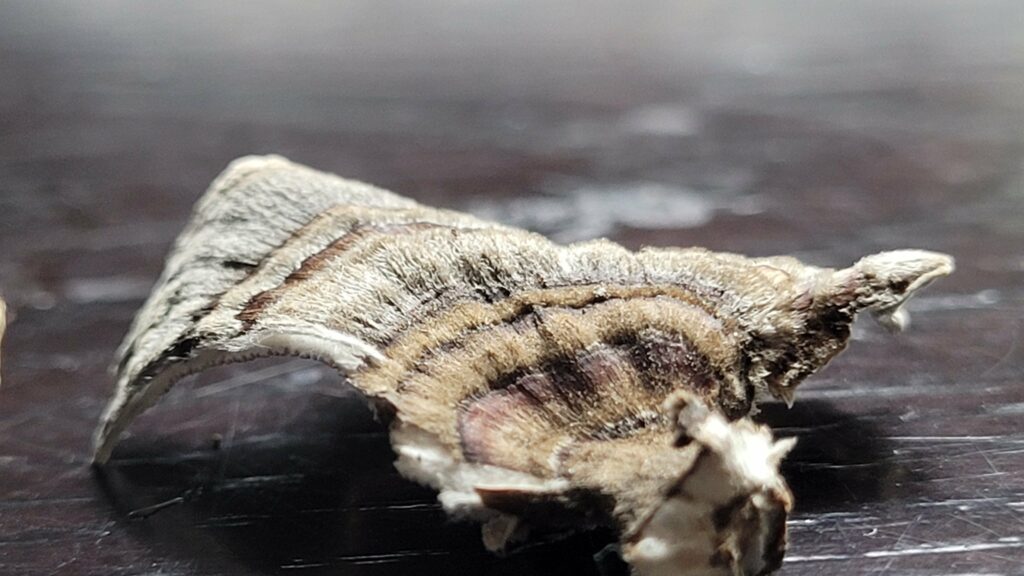
Turkey tail mushrooms are beautiful upon close inspection. Fine hairs create this shiny and velvety richness to the varied coloring. The photo above shows the hairyness of the mushroom but certainly does not do the velvet-shine any justice.
Has a fan shape, like a turkey’s tail

Particularly when offered the top-fruiting space to grow in rosettes, you’ll get a full-looking turkey’s tail fan shape from each mushroom.
When grown on the side of a log, it’ll still have that frilling-fan characteristic but with a wider base.
Concentric bands
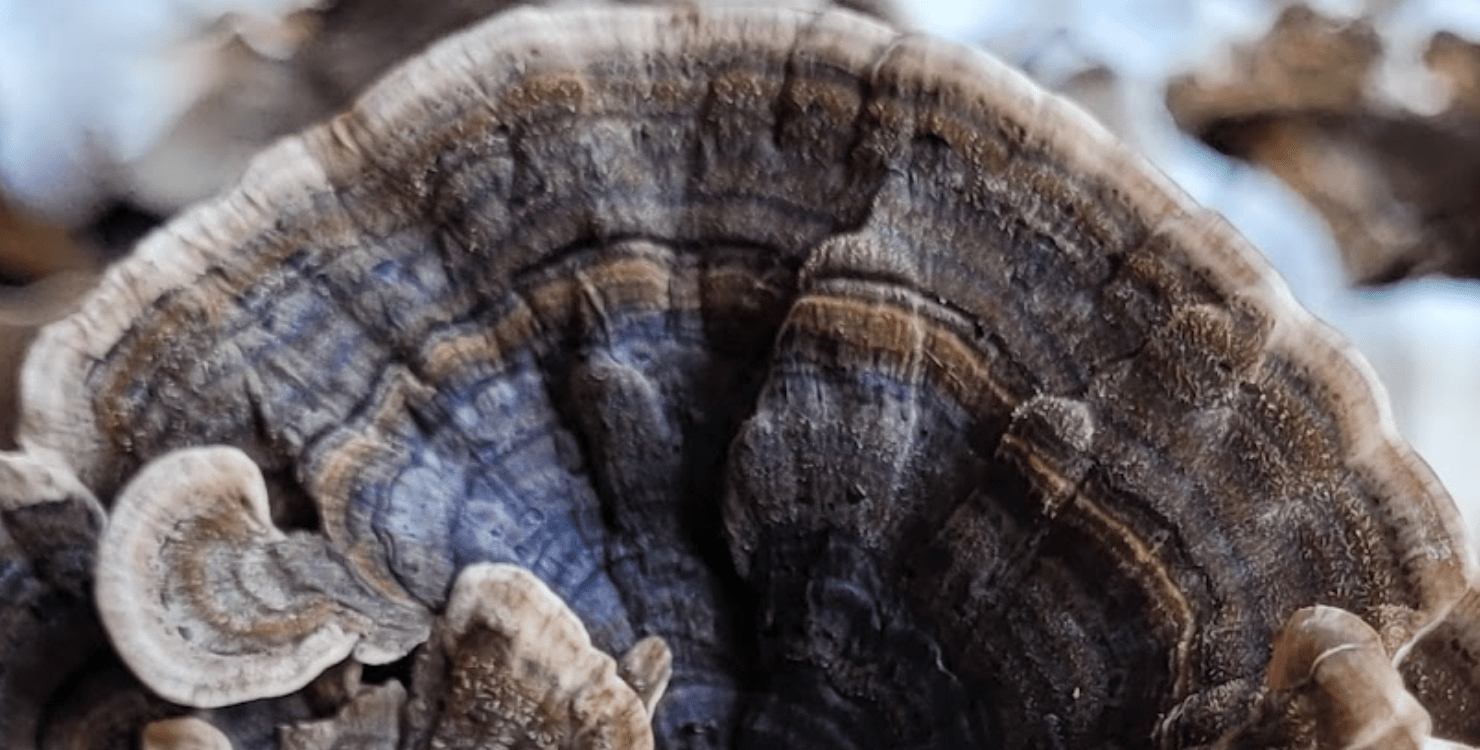
The concentric bands on turkey tail should be quite obvious. Of all the turkey tail I’ve seen they always end with a white or off-white band on the outer edge (top pf the photo).
The main color of the turkey tail is typically light and dark grey, brown, or dark brown with brighter blonde or darker stripes. Some can have hues of orange, red, green, and blue.
In general, they all have obvious contrasting colors or shades.
Grows in a rosette or shelving arrangement
Mushrooms grow in various ways on their substrates. Turkey tail mushrooms are most often found on hardwood logs.
A rosette growing arrangement is shown in the following image:
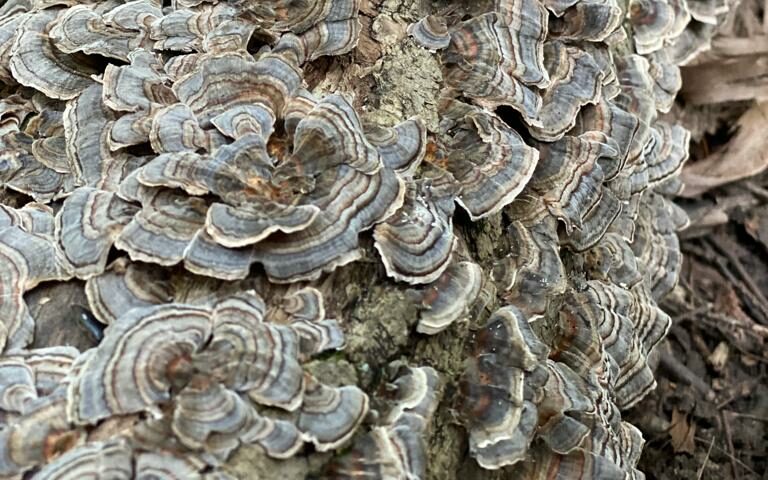
It’s also just as common to find turkey tail mushrooms growing in a shelving formation. See the image below:

From everything we’ve seen, they tend to grow in rosettes when fruiting from the top of logs and in shelves on the sides of the log.
They opt for rosettes when space permits.
Flexible when fresh
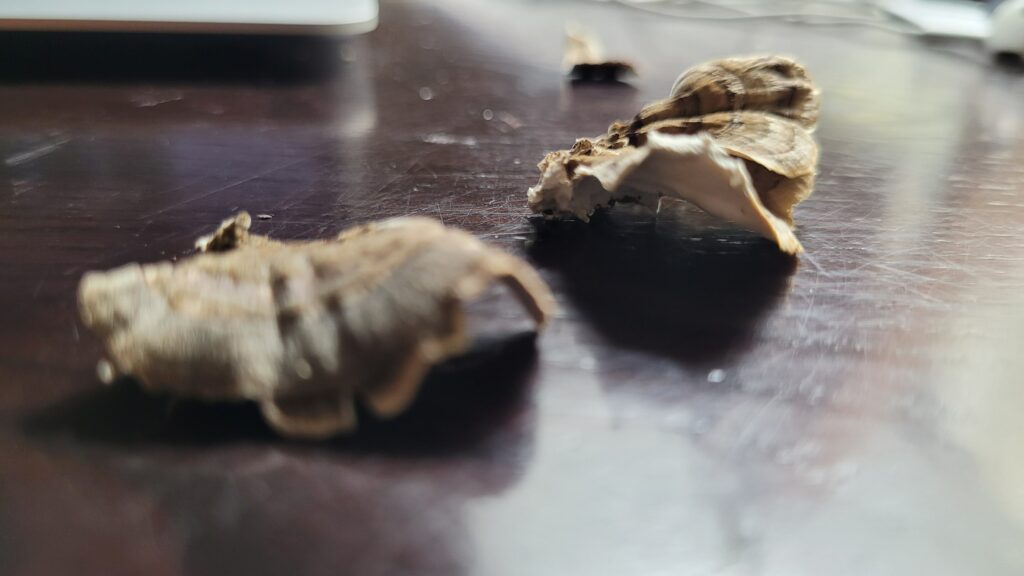
Fresh turkey tail mushrooms are also rather thin and flexible when fresh. They won’t break when you bend them unless they have been harvested and dried.
As a bonus: when cut, turkey tail shows a single layer of white flesh.
If all those items match up with what you have in your basket, continue to step two!
2. Learn about each turkey tail look-alike
The best thing all these look-alikes have in common with turkey tail is they aren’t poisonous—just inedible! What sets turkey tail apart is its medicinal value when extracted from its inedible fruiting body.
See: How to Process and Consume Turkey Tail Mushrooms
Most turkey tail look-alikes share 1-3 common distinctions as turkey tail, but never have all six.
After detailing the most similar turkey tail look-alikes, I’ll provide a thorough list of additional potential mushrooms that could be mistaken.
The confusing turkey tail look-alikes
The top 3 turkey tail look-alikes include Stereum ostrea (false turkey tail), T. hirsuta (hairy bracket), and T. pubescens.
Quick ways to tell these falsy’s apart is:

- Stereum ostrea (false turkey tail) is often variously colorful very much like turkey tail. The big giveaway is when you turn it over and it does not have pores—The bottom of false turkey tail is smooth.
Similarities to turkey tail: Concentric bands with various contrasted coloring. Thin and flexible. Velvety when young.
Differences from turkey tail: Often curves. Has no pores. The biggest giveaway is no pores.
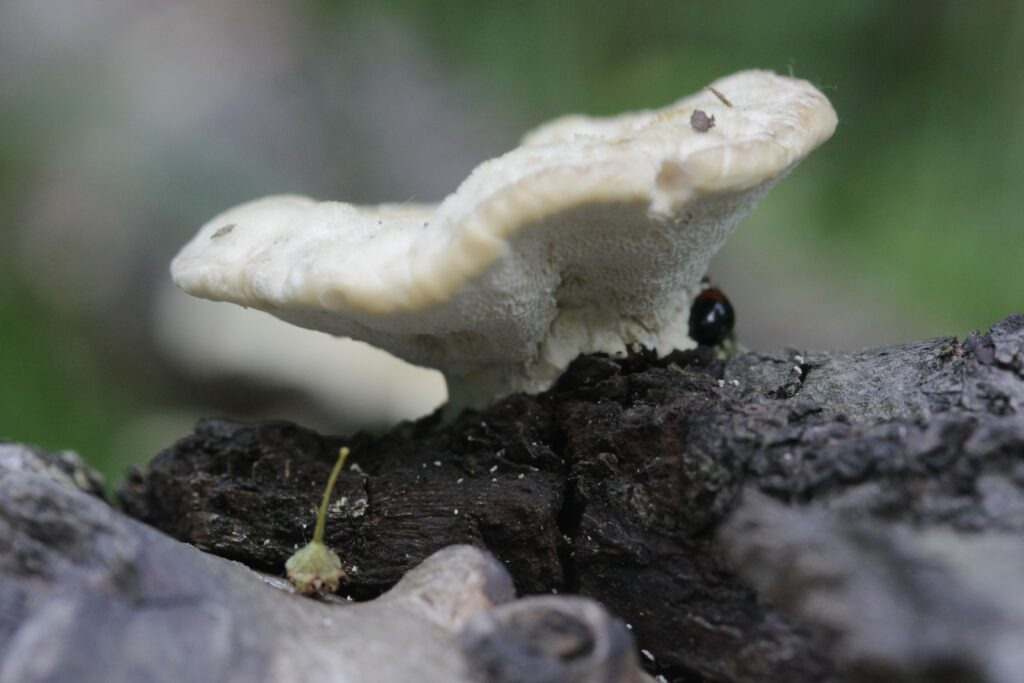
- T. hirsuta (hair bracket) does not often have obvious concentric bands and high-contrasting colors, they always have a thicker body, and are hairier (hence the common name hairy bracket). Turkey tail is not hairy to the touch like hairy bracket. Due to the thickness, it also isn’t flexible like turkey tail.
Similarities to turkey tail: Sometimes has contrasting colored bands. Has small pores. May offer similar coloring but with generally fewer variations. Shelving growth habit. Fan shaped.
Differences from turkey tail: Has two layers of flesh, thick—up to 1 cm. Lacks color contrast most of the time. Dense with hair and somewhat furry rather than velvety. The biggest giveaways are its thickness and hairy texture.
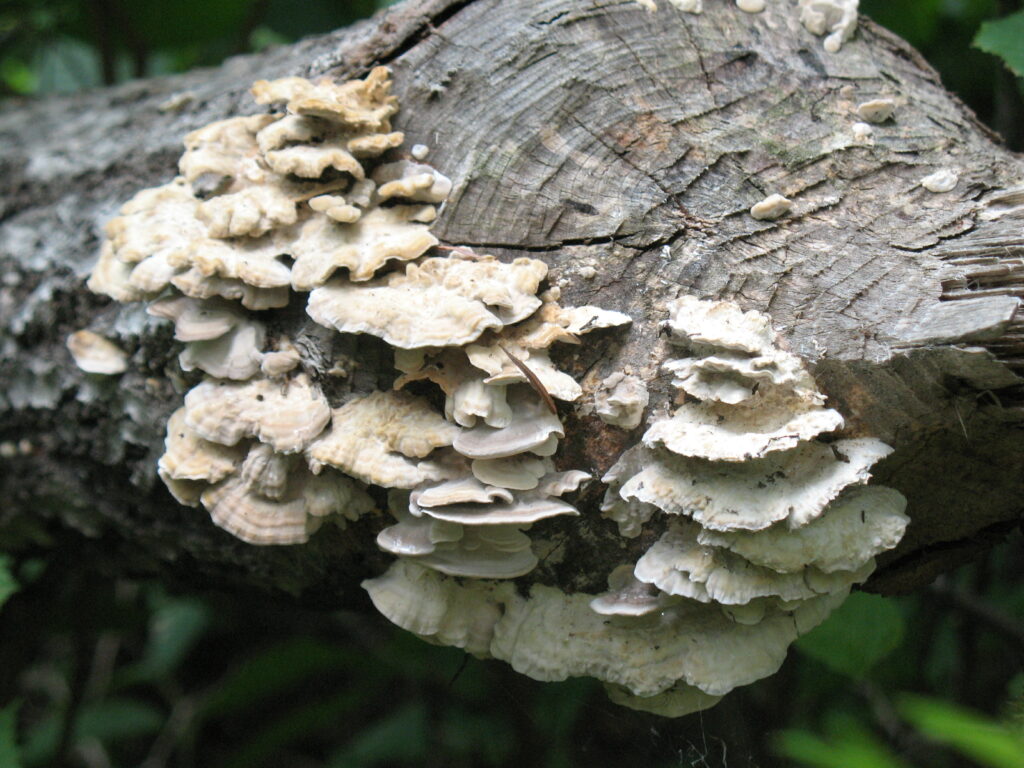
- T. pubescens (white bracket) have larger easier-to-see pores, a thicker body, and a more plain cap.
Similarities to turkey tail: Fan-shaped, shelving, and rosette formations. Small pores. White flesh.
Differences from turkey tail: Thick up to 1 cm. Light colors with low contrast. Pale coloring from white to tan. The biggest giveaways are its thickness and pale coloring.
Turkey tail look-alikes continued
If it isn’t turkey tail and you’re still curious what mushroom you’ve harvested, this is thorough a list of more mushrooms that have similar characteristics as turkey tail.
- Trametes villosa
- Trametes gibbosa – lumpy bracket.
- Trichaptum biforme – violet-toothed polypore
- Tyromyces chioneus – white cheese polypore
- Cerrena unicolor – mossy maze polypore
- Coltricia cinnamomea – Tiger’s eye
- Bjerkandera adusta – smoky polypore
- Lenzites betulina – gilled polypore
- Gloeophyllum sepiarium – rusty gilled polypore
- Daedaleopsis confragosa – thin maze polypore
- Daedalea quercina – thick maze oak polypore
- Pycnoporus cinnabarinus – cinnabar-red polypore
- Phaeolus schweinitzii – dyer’s polypore
- Steccherinum ochraceum – ochre spreading tooth
- Schizophyllum commune – split gill
Again, this is simply a guide to identifying turkey tail (not a guarantee) and I urge you to always check multiple sources when Identifying mushrooms. I am not a mushroom expert. I share what I have learned as an active mushroom grower, forager, and consumer!
Up Next:
Growing Gourmet & Medicinal Mushrooms (qualityspawn discount)
Recent Posts
There’s no shortage of full-sun ground covers for zone 4 climates! Each plant in this list can withstand the frigid temperatures and also enjoy the hot sun in summer. Full sun means that a plant...
There's no shortage of full sun ground covers, not even in zone 3! Zone 3 climates offer hot but short-lived summers and very cold winters. So each plant in this list can withstand the frigid...
